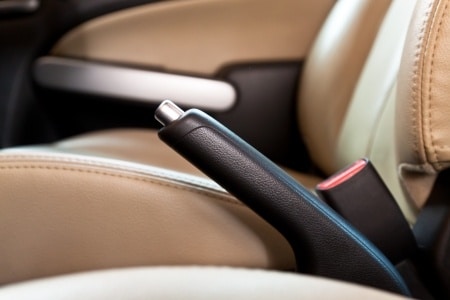How to Check and Change Your Car’s Battery
 If you have trouble starting your car, you could have a number of problems. You could have a bad battery, a bad alternator, faulty starter, security system issue, a bad sensor, or a random electrical problem. The first thing you want to do is check your battery because it is probably the least expensive and least troublesome problem to fix. Batteries have an average lifespan of about three years. If you’ve had your car longer, then you could almost be certain that you need a new one. Still, you want to go through the proper processes of canceling or establishing a bad battery diagnosis. First, examine your cables and ensure that they are connected tightly and do not have rust or corrosion on them. You can examine the connections with your eyes to see if they have any apparent issues. Unscrew them with an 8 mm socket and examine them inside and out.
If you have trouble starting your car, you could have a number of problems. You could have a bad battery, a bad alternator, faulty starter, security system issue, a bad sensor, or a random electrical problem. The first thing you want to do is check your battery because it is probably the least expensive and least troublesome problem to fix. Batteries have an average lifespan of about three years. If you’ve had your car longer, then you could almost be certain that you need a new one. Still, you want to go through the proper processes of canceling or establishing a bad battery diagnosis. First, examine your cables and ensure that they are connected tightly and do not have rust or corrosion on them. You can examine the connections with your eyes to see if they have any apparent issues. Unscrew them with an 8 mm socket and examine them inside and out.
The Cancellation Process
You can use the cancellation process if you do not have the tools that you need to test the battery. The cancellation process consists of doing some tests that can cancel out any of the prospective diagnoses. For example, you could see if a jump will start the vehicle. If a jump starts the vehicle, then the probability of you having a bad battery is extremely high. If a jump does not start the vehicle, then you may have a starter issue or some other problem. You may want to take the car to a local mechanic or auto parts store if you get it started. They have the tools that are necessary to check the battery for a definitive answer. On the other hand, you can buy yourself the appropriate tools in case you have issues in the future. A voltmeter is the main tool that you need to check whether you have a bad battery or not. Voltmeters run between $8 and $30 usually. Making the investment is worth it because you can help yourself as well as other people who may need assistance in the future.
Checking the Battery with a Voltmeter
The first two steps of checking a battery with a voltmeter is turning the car off and disconnecting the positive battery terminal. The positive lead on the voltmeter should then go on your battery’s positive terminal. The negative should then go to your negative terminal. The voltmeter will display a number on it that will tell you where your battery stands. A number that is more than 12.9 volts indicates that your battery is receiving too much charge from the alternator. A “good” battery should have a reading that is between 12.4 and 12.7 volts.
Crank and Check
You can also check to see if your battery is bad by using the voltmeter and performing a cranking voltage check. Start the car and allow it to keep trying to turn all the way over. A partner can then look at the voltage reading while you are trying to start the car. Your battery is shot if you get a reading that is below 9.6 volts while you are trying to crank the car.
Using a Power Probe
A power probe is a different type of tool that does the same exact job as the voltmeter. You hook it up the same way you would hook up the voltmeter. The only difference is that the probe has a long, sharp end with which you will need to touch the positive battery connection. Once you touch the positive connection with the probe, you will get a reading from it. Your battery is good if it gives you a reading of 12.4 to 12.7 volts. Otherwise you may have an issue.
Choosing a Good Battery
Select a battery that has the correct number of cranking amps for your vehicle. Stores sell myriads of batteries. You can choose one that has a life span of one year, two years, three years, five years, or more. Replacing a battery is a matter of unscrewing the two connectors, puling the old one out, and putting a new one in. You can do it yourself, or you can allow a mechanic to do it.
Hopefully these tips will help you next time you have some battery troubles. By doing these steps yourself, you can save yourself a lot of money and time.
 If you have trouble starting your car, you could have a number of problems. You could have a bad battery, a bad alternator, faulty starter, security system issue, a bad sensor, or a random electrical problem. The first thing you want to do is check your battery because it is probably the least expensive and least troublesome problem to fix. Batteries have an average lifespan of about three years. If you’ve had your car longer, then you could almost be certain that you need a new one. Still, you want to go through the proper processes of canceling or establishing a bad battery diagnosis. First, examine your cables and ensure that they are connected tightly and do not have rust or corrosion on them. You can examine the connections with your eyes to see if they have any apparent issues. Unscrew them with an 8 mm socket and examine them inside and out.
If you have trouble starting your car, you could have a number of problems. You could have a bad battery, a bad alternator, faulty starter, security system issue, a bad sensor, or a random electrical problem. The first thing you want to do is check your battery because it is probably the least expensive and least troublesome problem to fix. Batteries have an average lifespan of about three years. If you’ve had your car longer, then you could almost be certain that you need a new one. Still, you want to go through the proper processes of canceling or establishing a bad battery diagnosis. First, examine your cables and ensure that they are connected tightly and do not have rust or corrosion on them. You can examine the connections with your eyes to see if they have any apparent issues. Unscrew them with an 8 mm socket and examine them inside and out.
 If you have trouble starting your car, you could have a number of problems. You could have a bad battery, a bad alternator, faulty starter, security system issue, a bad sensor, or a random electrical problem. The first thing you want to do is check your battery because it is probably the least expensive and least troublesome problem to fix. Batteries have an average lifespan of about three years. If you’ve had your car longer, then you could almost be certain that you need a new one. Still, you want to go through the proper processes of canceling or establishing a bad battery diagnosis. First, examine your cables and ensure that they are connected tightly and do not have rust or corrosion on them. You can examine the connections with your eyes to see if they have any apparent issues. Unscrew them with an 8 mm socket and examine them inside and out.
If you have trouble starting your car, you could have a number of problems. You could have a bad battery, a bad alternator, faulty starter, security system issue, a bad sensor, or a random electrical problem. The first thing you want to do is check your battery because it is probably the least expensive and least troublesome problem to fix. Batteries have an average lifespan of about three years. If you’ve had your car longer, then you could almost be certain that you need a new one. Still, you want to go through the proper processes of canceling or establishing a bad battery diagnosis. First, examine your cables and ensure that they are connected tightly and do not have rust or corrosion on them. You can examine the connections with your eyes to see if they have any apparent issues. Unscrew them with an 8 mm socket and examine them inside and out.


